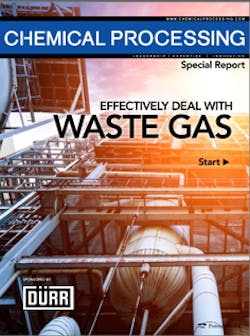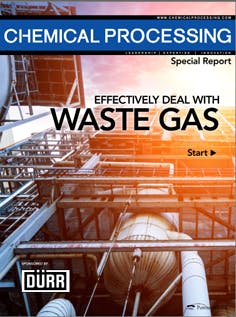How To Decide Which Waste Gas Thermal Oxidizer Is Right For Your Process
Whether you are aiming to cut the costs of incineration, transform greenhouse gas into a feedstock for chemicals, meet compliance requirements to dispose of environmentally hazardous wastes or set up an effective greenhouse gas monitoring plan, you must first understand what’s best for your process.
Download the special report now.
[javascriptSnippet ]
Indeed, an RTO provides the highest fuel efficiency of any type of waste-gas thermal oxidizer and, thus, may allow you to cut costs for incineration. But it’s not best for all services, so you must understand its limitations. When an RTO is the right choice, you must then consider its particular design and operational issues.
However, direct fired thermal oxidizers (DFTO) are the best choice when:
- Production processes demand steam energy
- Required destruction efficiency is greater than 99.5%
- Highly caloric off gases with low oxygen must be handled
- High loading of halogenated or sulfurous compounds are expected (acid generators)
- Destruction of waste liquids is needed.
[Special Report: Effectively Deal With Waste Gas]
Another challenge many companies face is understanding all the requirements for the mandatory Greenhouse Gas Reporting Program. The initial focus is on stationary combustion sources at all industrial facilities, and includes additional emission sources for specific industry sectors. A facility must determine if it is subject to any of the specific industry sector subparts based on type of processes on-site.
There’s little doubt that the EPA intends to eventually mandate that companies reduce their emissions regardless of whether they are seeking permits. It would be wise for a company to examine its current emission levels and evaluate possible ways of reducing them now so it can incorporate suitable investments into future capital budgets.
To help you sort through all of this, the editors of Chemical Processing have put together a Special Report: Effectively Deal With Waste Gas. Here you will learn:
- How to decide if a regenerative thermal oxidizer (RTO) is the best option
- How to avoid common RTO Mistakes
- 8 steps to RTO design
- When to consider direct fired thermal oxidizers (DFTO)
- How one plant’s annual savings exceeded the operating costs of their new emission control system.
- Examples of potential GHG measuring methods and strategies

